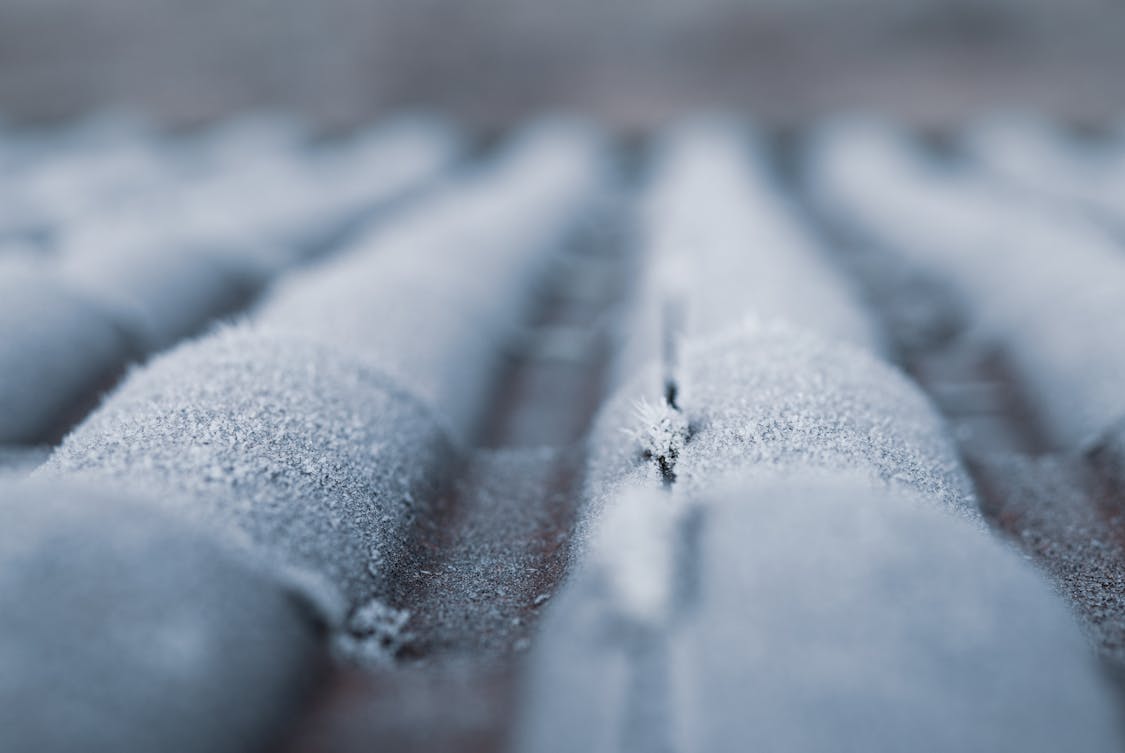Winter brings cold air, heavy snow, and the kind of wind that tests every seam on a house. Preparing the roof ahead of time reduces surprises and keeps small issues from turning into big headaches.
A steady plan, a bit of elbow grease, and a list of priorities will get the job done without turning into a full weekend ordeal.
Inspect The Roof Surface
Walk the perimeter and scan the roof from the ground first, using a pair of binoculars if needed to spot damaged or missing shingles. Up close, look for cracks, splits, curling, and areas where granules are worn thin, signs that the cover has seen better days.
Small trouble spots often cluster near valleys, chimneys, and roof joints, so give those nooks a careful look. If you spot concentrated wear, plan for targeted repairs sooner rather than later.
Clear Gutters And Downspouts
Clogged gutters can back up melted snow and create ice dams along eaves, which push water under shingles and into the ceiling. Remove leaves, seed pods, and grit by hand or with a narrow trowel, and flush the line with a hose to make sure flow is steady.
Attach downspout extenders if water pools near the foundation; winter melt needs a clear path away from the house. A quick gutter sweep now cuts down on ice headaches later.
Trim Overhanging Branches
Branches that rest on a roof or hang overhead can scrape shingle surfaces and drop heavy loads of snow and ice. Prune limbs back to a safe distance so wind won’t fling them onto the roof under strain.
A clean-cut job prevents scraping and reduces the chance of broken branches crashing during a thaw or storm. If large trees loom near the house, get an arborist to handle the big cuts.
Check Flashing And Seals
Metal flashing around chimneys, vents, and skylights is the line of defense against driven moisture finding its way in. Look for rust, separation, or gaps where sealant has shrunk or peeled away, and reseal or replace where the joint looks weak.
Tight, well-seated flashing keeps wind-driven snow from creeping under roof edges and into rafters. A few minutes of attention here wards off slow leaks that show up later.
Replace Damaged Shingles
A broken shingle or two can be patched, but larger patches or many brittle shingles call for replacement to keep the deck weatherproof.
Match new shingles to the existing type and nail them properly, making sure overlapping runs shed water as intended. Loose tabs and lifted edges are red flags; secure them or swap in fresh material.
For more extensive damage, contacting roof replacement services lyman ensures a professional fix that protects the home through winter. Doing this work before cold weather tightens everything up makes the fix simpler.
Boost Attic Insulation
Cold air leaking into the attic meets warmer roof surfaces and creates ice dams when heat melts snow unevenly on the roof. Add batt insulation or blown fiber to raise thermal resistance and slow heat loss through the ceiling.
A snug, consistent layer helps keep the roof surface cold and snow settled until it melts uniformly. Good insulation pays back in comfort and a smaller risk of roof-side water issues.
Seal Air Leaks Around Fixtures
Gaps around pipes, wiring, and recessed lights let warm attic air escape; that air goes up and warms the roof from below. Seal gaps with foam or caulk made for attic use, and be careful to maintain required clearances near fixtures that get hot.
Plugging those holes tight reduces warm spots that form icicles and weak points in the snow cover. Small gaps add up, so work methodically and treat every opening the same way.
Install Ice And Water Shield Where Needed

Thin, sticky underlayment at vulnerable edges keeps melting water from sliding under shingles and into the deck, which is especially helpful on low-slope sections. Apply a self-adhering membrane along eaves, valleys, and exposed transitions to form a second line of defense.
The membrane sticks to the deck and bonds to fasteners, creating a waterproof barrier that performs well under freeze-thaw cycles. It’s a smart choice for older roofs and for homes that get heavy, wet snow.
Improve Attic Ventilation
Good intake and exhaust flow keeps attic temperatures closer to the outside air and avoids warm pockets that melt snow unevenly on the roof. Balance soffit vents with ridge or gable vents to move air without creating drafts across insulation.
Proper ventilation cuts down on condensation, which can rot sheathing and feed mold in damp winter seasons. Even airflow supports a longer roof life and steadier performance under weather stress.
Install Heated Cables In Critical Spots
Electric heat cables run along eaves and in gutters to melt channels through ice that would otherwise dam water behind ridges. Lay cables in a zigzag pattern or follow roof valleys where ice buildup is a recurring pain, and attach them to the gutter lip for steady run-off.
Use kits rated for outdoor, roofing use and plug them into GFCI-protected outlets for safety. They’re not a cure-all, but they keep key lines open in stubborn conditions.
Prepare Tools For Snow And Ice Removal
Have a roof rake, long-handled shovel, and safety harness ready so small piles of snow can be moved before they weigh the structure down. Remove snow in thin layers to avoid gouging shingles; work from the edge upward and never climb onto a steep, icy roof when gardeners say “no way.”
Keep salt or ice melt off asphalt shingles and use calcium chloride sparingly on walkways instead. Safety gear and the right tools make the chore faster and cut the chance of accidental damage.
Stock Up On Repair Materials
A kit of tar, flashing tape, roofing nails, and replacement shingles lets you handle quick patches when a storm opens a weak spot. Keep a roll of heavy plastic or tarp to cover a damaged area until a permanent fix can be made, and store spare shingles that match the roof.
A ready bag of supplies saves time and prevents small fixes from worsening into big problems. Think of the kit as insurance you can reach for without dialing a pros number right away.
Hire A Professional For Major Work
Complex tasks like re-roofing, major flashing replacement, or work on steep pitches often call for trained hands and certified materials. Pick a contractor with local references and clear licensing, and ask for written details on materials, timetable, and warranty coverage.
A pro can spot structural issues that hide under insulation or behind soffits, so their report can steer follow-up work effectively. Paying for skill upfront can trim costs and hassles later on.
Schedule A Prewinter Maintenance Check
Plan a roof check a month before the first expected freeze to leave time for ordering parts or booking a contractor. A seasonal check catches loose tiles, torn underlayment, and other small defects that behave badly under ice and snow load.
Walk through the checklist from gutters to ridge, mark anything needing follow-up, and set a repair date on the calendar. A timely visit keeps the roof working like it should through the cold months ahead.








